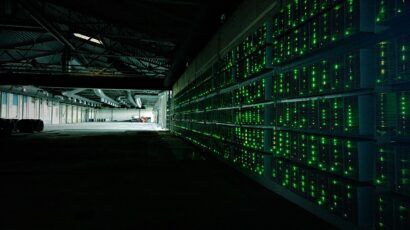Nuclear power: Asking the wrong questions
By Archived: Steven Starr, June 1, 2016
This is a discussion in which, as Manpreet Sethi has noted, all the participants "either argue in favor of nuclear power or decline to argue against it. … [T]hey see no need to eliminate nuclear energy." That is, the Bulletin has selected experts who may suggest new policies or technological fixes for the nuclear industry, but will not call for the industry's abolition.
I am a senior scientist with Physicians for Social Responsibility, a group that does call for abolition. Physicians for Social Responsibility is deeply concerned about the medical and ethical consequences of the ongoing production of enormous amounts of high-level nuclear waste. Such waste, hundreds of thousands of tons of it, sits in "cooling pools" next to nuclear power reactors; many individual pools contain more cesium-137 than was released by all atmospheric nuclear weapons tests combined. These utterly lethal radionuclides will require some form of supervision for hundreds of thousands of years if they are to be prevented from entering the biosphere. Thousands of generations of human beings will have to perform the supervision.
Only one country, Finland, has begun work on a permanent repository for high-level waste, but it is not yet operational. The only permanent site for low-level waste in the United States, the Waste Isolation Pilot Plant in New Mexico, is currently closed due to mishaps including a 2014 radiation release. Hence the entire world provides no good examples of safe permanent storage.
But the problem, of course, extends beyond waste—it includes catastrophic releases of radiation, something that the nuclear industry has not managed to prevent in the first 70 years of its existence. And even Sethi admits that "[t]here can never be a perfect strategy for disaster prevention and preparedness." So there is little reason to think such releases will be prevented in the future.
When they aren't prevented, as at Chernobyl, the consequences are devastating, as study after study demonstrates.
- The International Physicians for the Prevention of Nuclear War, in a 2011 report called "Health Effects of Chernobyl," found that 25 years after the disaster, more than 90 percent of "liquidators"—the soldiers and civilians, numbering at least 740,000, who fought to contain the reactor fire and clean up afterwards—were severely ill or had become invalids.
- According to the UN Scientific Committee on the Effects of Atomic Radiation, between 12,000 and 83,000 genetically damaged children will eventually be born in "affected countries of the Chernobyl region," while 30,000 to 207,000 such children will be born worldwide due to the disaster. These cases will take time to appear—only 10 percent of the overall expected damage can be seen in the first generation after exposure.
- The "TORCH-2016" report, an independent scientific evaluation of Chernobyl's health effects based entirely upon peer-reviewed sources, finds that about 5 million people in Belarus, Ukraine, and Russia live in areas still highly contaminated by the Chernobyl disaster (with more than 40 kilobecquerels of cesium-137 per square meter). These areas include 18,000 square kilometers in Belarus, 12,000 square kilometers in Ukraine, and 16,000 square kilometers in Russia. About 400 million people live in less contaminated areas (with between 4 and 40 kilobecquerels of cesium-137 per square meter).
- The unfortunate people who must live on these contaminated lands—especially infants and children—suffer greatly from the effects of the long-lived radionuclides (primarily cesium-137) that have contaminated the forests, soils, and foodstuffs to which they are constantly exposed. In 2011, the National Ministry of Emergencies of Ukraine issued a national report entitled "Twenty-five Years after Chernobyl Accident: Safety for the Future." The report found that by 2001, no more than 10 percent of the children living in the seriously contaminated zones of Ukraine were considered healthy. Prior to the dispersal of radionuclides from the Chernobyl explosion, 90 percent had been healthy.
These are some of the consequences of a single catastrophic nuclear accident. Fukushima, meanwhile, is an example of the ongoing irradiation of the biosphere. There will be more accidents. The nuclear industry will continue to claim that such accidents pose "no significant danger to human health." The evidence indicates otherwise.
"If they can get you asking the wrong questions," Thomas Pynchon wrote in Gravity's Rainbow, "they don't have to worry about answers." Asking how to prepare for a nuclear disaster is asking the wrong question. It steers the conversation away from the real issue, which is why nuclear power reactors should be allowed to continue producing mass quantities of nuclear poison that must be isolated from the biosphere for more than 100,000 years—forever, in human terms. The Chernobyl disaster released only a tiny fraction of the radioactive poison that nuclear power has produced. The overwhelming majority that remains is a grave danger, and to ignore it is willful blindness.
Editor's note: This article states that Chernobyl "liquidators" (the soldiers and civilians who fought to contain the reactor fire and clean up afterwards) numbered at least 740,000; the actual number of liquidators is a matter of dispute. The article also attributes certain information to the UN Scientific Committee on the Effects of Atomic Radiation (UNSCEAR); that information is in fact an extrapolation from UNSCEAR figures by the International Physicians for the Prevention of Nuclear War.
Topics: Nuclear Energy
Share: [addthis tool="addthis_inline_share_toolbox"]














